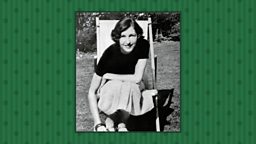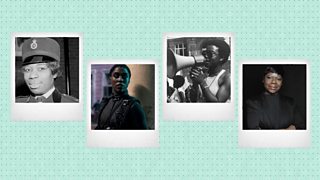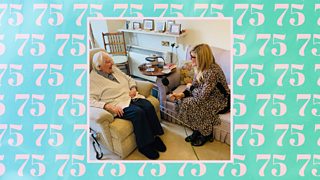Remembering the forgotten female secret agents from World War Two
​​While you may be familiar with the stories of women who served as nurses or in factories during World War Two, you’ve probably heard much less about the agents of the Special Operations Executive.
These women played a vital role in the war effort, conducting espionage and sabotage behind enemy lines.
To mark Remembrance Day, Woman’s Hour spoke to history teacher Shalina Patel to find out more about the agency and who was involved…

What was the Special Operations Executive?
“They were a new secret intelligence agency, formed in July 1940,” Shalina told Woman’s Hour. “We're all familiar with MI5 and MI6, but this agency were doing slightly more underhand things, using disruptive tactics.
“They were involved in sabotage missions. They were involved in linking up with different resistance groups across Europe. They were involved in assassinations as well. Churchill said in 1940 that his aim for the SOE was to, quote, 'set Europe ablaze!' They did a huge amount to disrupt the Nazis from within.”
So who were these trailblazing women? We found out more about three of the agents…
Christine Granville
“Christine Granville was an agent of Polish descent, so her name was Christina Schonbek. She's actually known as the first female Special Agent of World War Two and the longest serving, so she was doing a lot of this work before the SOE were officially created,” says Shalina.

“One of the things that she did was ski into Nazi occupied Europe. She got an Olympic skier to help her, which is just incredible, and she was skiing with pockets and bags full of British propaganda, because her job was to link up with Polish resistance fighters in Poland.
“She was all over the place during the Second World War. She did a lot of work in Poland. She was parachuted into France in 1944. She was a vital part of the resistance. She smuggled intelligence.
“She went through a few hairy moments as well, so she was almost caught a few times. One of the times she was in her car and got questioned by border guards and she just played a kind of ‘damsel in distress’ role. She said: ‘Oh, my car is stalling, can you help me fix it?” This was one of the reasons Churchill was keen to get women to be in the SOE, because he knew that they would be viewed with less suspicion and Christine played on that.”
Virginia Hall
“Virginia Hall actually lost her leg in a hunting accident, so she had a wooden leg and she referred to her leg as Cuthbert. She was absolutely well known to the Gestapo and they actually called her the ‘limping lady’. It just goes to show that the Gestapo knew how important these female agents were, by the fact that they constantly were trying to find them.”

“She did so many things during the war. She was sent into France. She was given a cover of being a journalist. She actually helped break upwards of 10 agents out of internment camps all across France. And she was alone for about 12 months in the field before they sent any more female agents.
“What's amazing about her is that she trekked across the Pyrenees with her wooden leg because of course, she couldn't go through borders. And what I love about Virginia’s story is that she survived the war and she didn't stop there. She didn't put her feet up and say: 'Do you know what? I'm done.'
“She was one of the first women to be recruited into the CIA as well, and she died at the age of 76. She did not let her disability stop her from doing things that the most incredible athletes would potentially not be able to do, frankly.”
Noor Inayat Khan
“Noor Inayat Khan was of mixed-race heritage. Her father was Indian and her parents lived all over Europe, in Russia and France and various places. She's an incredibly important woman for me as a woman of South Asian heritage because she looks like me and was incredibly important to the war effort,” says Shalina.

“She found herself in England at the beginning of the war where she worked for the Women's Auxiliary Air Force (WAAF’s). She showed herself to be a really fantastic wireless operator during the training. They did note that she was not the best when it came to fake interrogations, but they sent her to France anyway because she was so talented.
“She was integral in connecting agents in the field with the SOE back home. The average lifespan of a wireless operator in the field was six weeks at this point, because as soon as they switched their wireless on, the Gestapo had vans looking for the signals. So she was in a really dangerous spot.
“She'd actually been told by the SOE that they would get her out as they knew that things were dangerous. But she said: ‘No, I can't leave my agents in the field. If I go, there's going to be no one to connect everyone together.’
Shalina adds: “Unfortunately she was betrayed by the Gestapo and eventually ended up in Dachau concentration camp in Germany. She was put under a Night and Fog Decree which shows that the Nazis knew that she was incredibly special and dangerous because they were trying to keep her presence really, really quiet. She was executed at Dachau by the Nazis.

“I feel like the stories of these women are not necessarily that well known in the public consciousness and their images don't really appear when we think about remembrance. But for me, when we have a moment of silence in remembrance, these are the women that I will be thinking about.”
Listen back to the full interview with Shalina Patel or any other episodes you may have missed on ±«Óătv Sounds, and join the conversation on and @bbcwomanshour.




